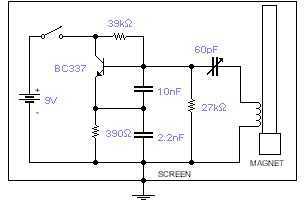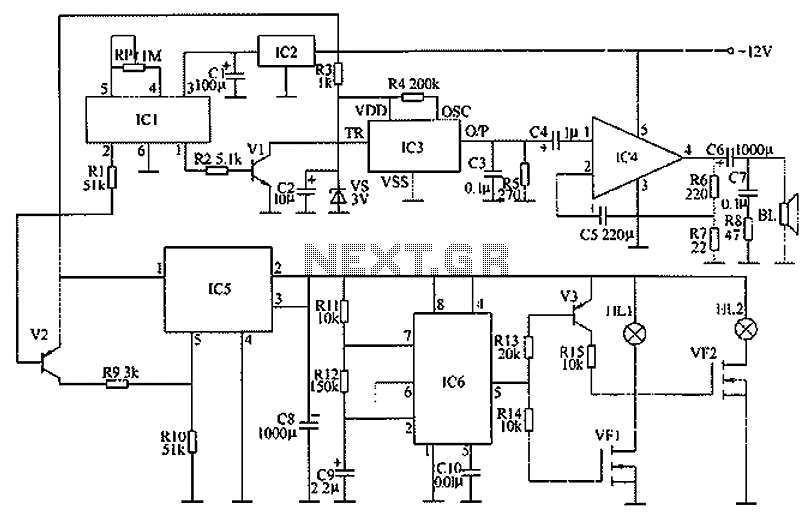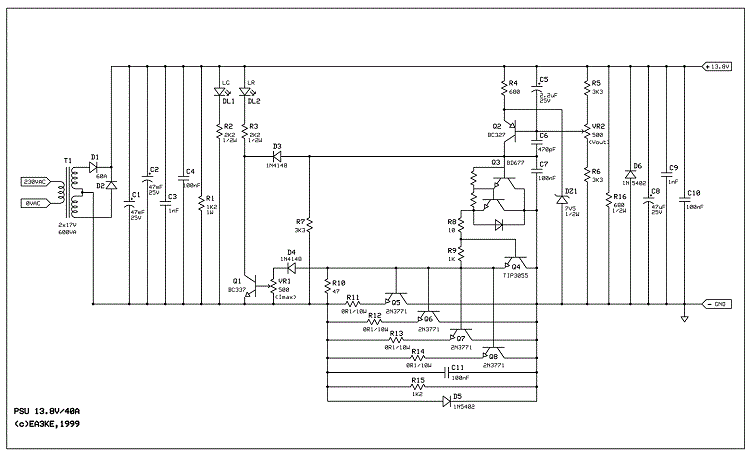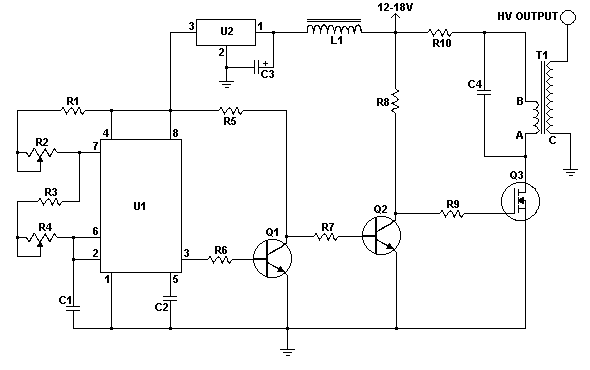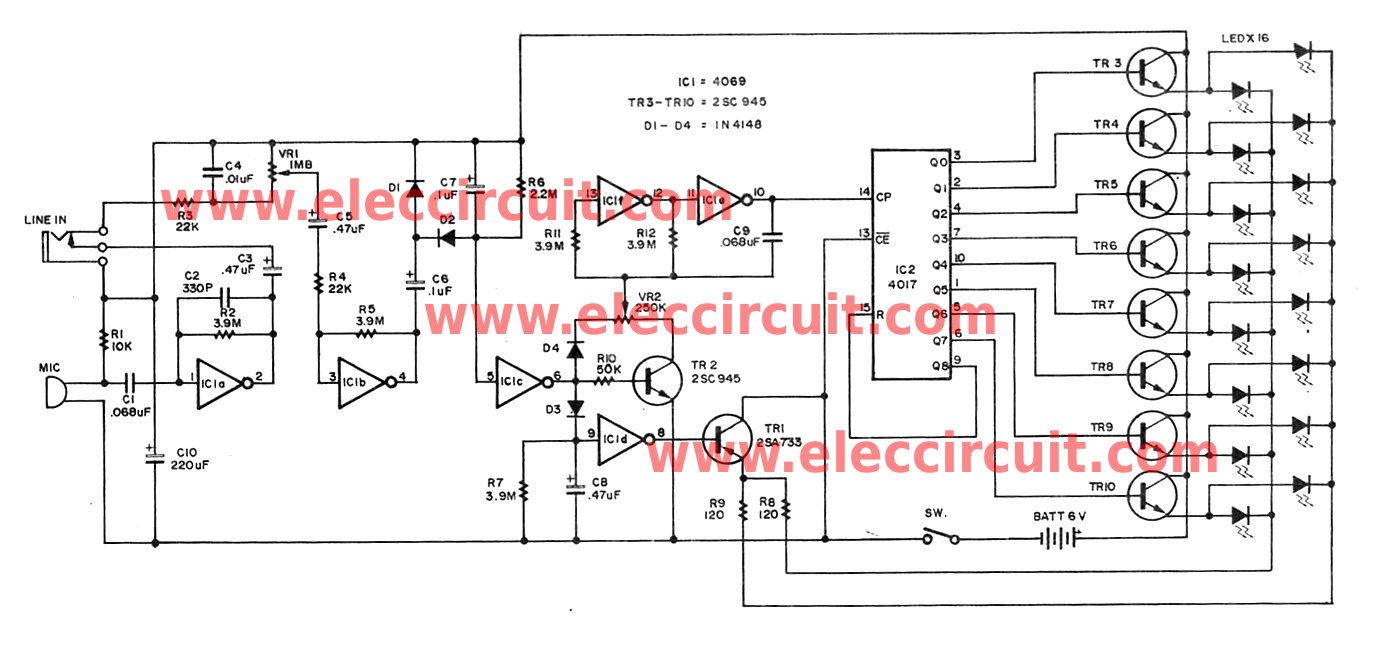
Stereo Preamplifier Circuit
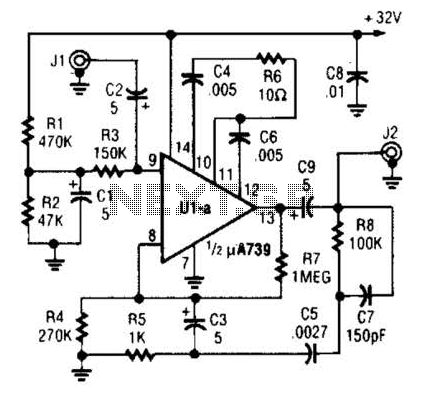
A fundamental component for audio applications, this circuit functions as a general-purpose preamplifier. It is recommended to utilize two circuits for stereo configurations.
This audio preamplifier circuit is designed to amplify low-level audio signals, making it suitable for a variety of audio applications. The circuit typically consists of a transistor or operational amplifier (op-amp) configuration that increases the amplitude of the input signal while maintaining signal integrity.
In a typical implementation, the circuit may include input capacitors to block DC offset and protect the following stages from unwanted voltage levels. The gain of the amplifier can be adjusted using feedback resistors, allowing for flexibility in signal amplification based on the requirements of the application.
For stereo applications, two identical circuits can be employed, one for the left audio channel and another for the right. This ensures that both channels are amplified equally, providing a balanced audio output. The circuits can be powered using a dual power supply to accommodate the operational needs of the op-amps or transistors, ensuring optimal performance.
Additional components such as potentiometers may be included to allow for volume control, and bypass capacitors can be added to filter out noise and improve overall sound quality. Proper grounding and layout considerations are crucial to minimize interference and ensure that the audio signal remains clean and undistorted.
Overall, this preamplifier circuit serves as a vital building block in audio systems, facilitating the enhancement of sound quality and enabling the connection of various audio sources to amplifiers or mixers. A building block for audio work, the circuit can be used as a general-purpose preamp. Use two circuits for stereo applications.
This audio preamplifier circuit is designed to amplify low-level audio signals, making it suitable for a variety of audio applications. The circuit typically consists of a transistor or operational amplifier (op-amp) configuration that increases the amplitude of the input signal while maintaining signal integrity.
In a typical implementation, the circuit may include input capacitors to block DC offset and protect the following stages from unwanted voltage levels. The gain of the amplifier can be adjusted using feedback resistors, allowing for flexibility in signal amplification based on the requirements of the application.
For stereo applications, two identical circuits can be employed, one for the left audio channel and another for the right. This ensures that both channels are amplified equally, providing a balanced audio output. The circuits can be powered using a dual power supply to accommodate the operational needs of the op-amps or transistors, ensuring optimal performance.
Additional components such as potentiometers may be included to allow for volume control, and bypass capacitors can be added to filter out noise and improve overall sound quality. Proper grounding and layout considerations are crucial to minimize interference and ensure that the audio signal remains clean and undistorted.
Overall, this preamplifier circuit serves as a vital building block in audio systems, facilitating the enhancement of sound quality and enabling the connection of various audio sources to amplifiers or mixers. A building block for audio work, the circuit can be used as a general-purpose preamp. Use two circuits for stereo applications.
